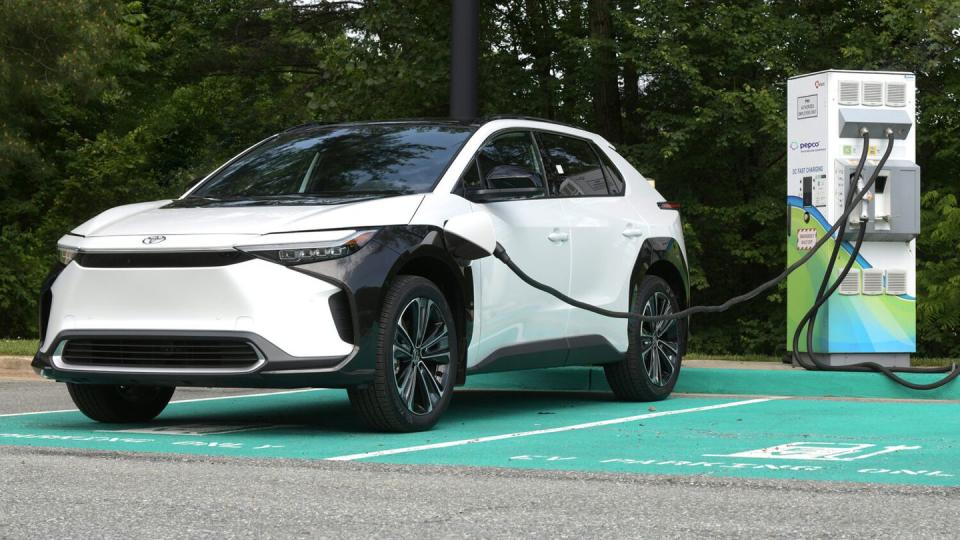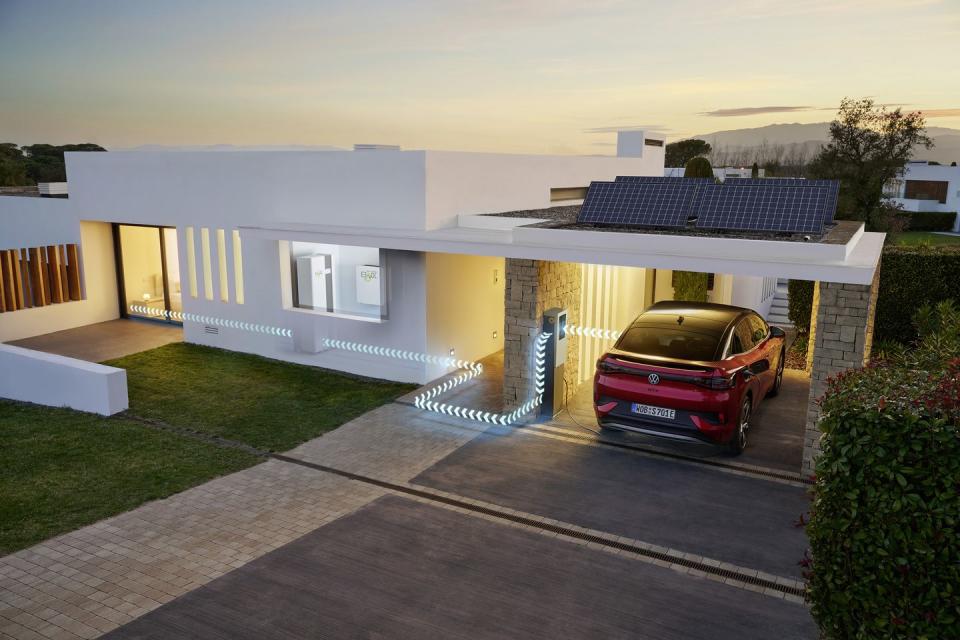Toyota and Pepco Will Test This Long-Awaited Tech with the bZ4X

Toyota and utility company Pepco will work together on developing practical uses for home-based vehicle-to-grid tech using the Toyota bZ4X.
Maryland has become the first state to mandate utility companies to develop V2G systems, following the passage of the Distributed Renewable Integration and Vehicle Electrification (DRIVE) Act.
Several automakers have built V2G capabilities into their battery-electric models, but other hardware and software needed to make it useful at home and on a grid-wide level remains scarce.
Vehicle-to-grid (V2G) charging has been a buzzword in the EV sphere for over a decade, at least the concept of it. But despite all the publicity it has gotten over the years, this technology has always floated just over the horizon.
There are plenty of objective business reasons for this tech, including hardware investment and grid preparedness, along with the fact that most EV owners want the electricity to go the other way—into their vehicles.
Just like a number of other EV makers, Toyota has been thinking about the promise of bidirectional charging, which could allow EV owners to power everything from appliances to homes, as well as the grid.
"V2G technology has the potential to support and provide benefits to customers through improved energy reliability and resilience, the integration of renewables, and the possibility of reduced electricity costs," the automaker notes.
Toyota has teamed up with energy utility Pepco to explore the promise of V2G with the automaker's first mass-market EV to be offered stateside. And for once, such a project isn't happening in California or another state on the west coast, but rather in Maryland.
The reason might surprise some: Earlier this year Maryland became the first state to pass V2G legislation in the form of the Distributed Renewable Integration and Vehicle Electrification (DRIVE) Act, requiring utility companies to actually take steps to develop V2G processes that will permit bidirectional charging.

The testing will take place at Pepco’s Watershed Sustainability Center in Rockville, Maryland, in the northwest suburbs of Washington, DC. Pepco plans to design and test charging and discharging use-cases that could benefit private homes and the grid, and also be economical for EV owners to operate.
Currently, such systems are envisioned as being completely automated, allowing home energy systems to make their own decisions when to charge EVs and when to send power back to the grid. So in the future, such systems won't require constant attention on the part of owners.
"Bidirectional charging is a great way for customers to leverage their electric vehicles in a way that supports the grids and their home electricity ecosystem," said Christopher Yang, group vice president, Toyota EV Charging Solutions.
Pepco itself has also been busy installing EV chargers in the densely-populated suburbs near DC, in Montgomery and Prince George's Counties.
"Working with Pepco will help us understand charging and discharging use-cases, which will ultimately benefit our customers and help utility providers better understand grid demands," Yang added.
Ideally, such systems could be part of home energy storage systems and solar energy generation, permitting homes to actually produce and sell excess energy when needed by the grid. But it will also take some new hardware, as well as EVs with bidirectional charging capability, to make this work at scale.

Among other challenges, the national EV adoption rate will certainly have to be higher than 10% to make this happen even on a local scale, and EV owners will also have to be sold on the idea of trading energy from their EVs back to the grid.
One of the reasons automakers are investing in V2G tech now is to anticipate a future in which sizeable percentage of all vehicles will be charging at home, primarily at night, which will place new strains on the grid and on power generation, as well as energy prices. Utility companies are starting to plan for this future as well, but it's clear that both industries are still in the early, experimental years of this tech.
Will home-based hardware for bidirectional charging become commonplace by the end of this decade, or is this something that will only materialize much later? Let us know in the comments below.

 Yahoo Autos
Yahoo Autos 